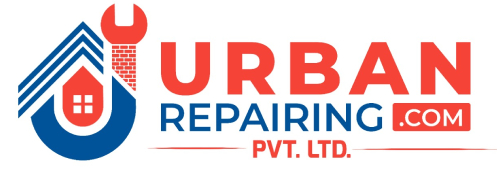The info offered on this weblog is for common informational purposes https://www.globalcloudteam.com/ only and does not represent medical recommendation. It is crucial to consult with a qualified healthcare skilled for any health considerations or before making any significant changes to your way of life or treatment plan. If one or more group members depart and are changed, the dynamic of recent members could cause the staff to move again to the Storming or Norming stage. Project governance structures (e.g., status meetings, reporting) may change to adapt to the evolving ways of working of the staff. Some individuals may be shy around new people, and not just like the uncertainty that comes with unknowns forward of them.
- The hallmark of this phase is the team’s capability to operate nearly autonomously, navigating challenges with collective expertise and a shared vision.
- In this part, staff members have developed a strong sense of trust, understanding, and mutual respect, permitting them to focus their energy on attaining outstanding outcomes.
- Based on these results, Wheelan’s position helps the normal linear models of group development and casts doubt on the cyclic fashions and Gersick’s punctuated equilibrium mannequin.
- But over time, they danger burnout, demotivation, and the itch to strive one thing new.
The adjourning stage could be bittersweet, because the group has shaped strong bonds and achieved its objectives, however now faces the truth of separation. It’s essential for the leader to assist members replicate on the group’s accomplishments, rejoice successes, and provide closure. This stage is commonly a chance for members to specific their appreciation for each other’s contributions and to part on positive phrases.
They realized to communicate effectively, to compromise, to appreciate one another’s different views. They started to develop frequent four stages of group development requirements for fixing problems and making choices. It was throughout this norming stage that they truly started to function as a unit. After the ‘Performing’ stage, when the staff has accomplished its objectives and the project comes to an end, the ‘Adjourning’ stage begins. This stage is typically also referred to as the ‘Mourning’ stage, reflecting the combined feelings that team members usually really feel. On one hand, there is a sense of satisfaction and satisfaction in the work accomplished.
Agile Growth Information: Increase Effectivity And Suppleness In Software Projects
This stage is marked by high dependency on the group chief, as individuals are unsure of their abilities and roles. A variety of theoretical models have been developed to explain how sure teams change over time. In some cases, the sort of group being considered influenced the mannequin of group development proposed as within the case of remedy teams. As a group leader, it is your goal to help and empower your team to assist get their highest-impact work done. When your team members feel comfortable with each other, it’s simpler to collaborate and work together. Alternatively, if your group is having challenges meshing, it may take them longer to get work done.
Situation: You’re Leading Your Team Via The Norming Stage

While this section is pure, it could sometimes be emotional, especially if the group has worked together for a long time period. Throughout this stage, the group operates easily and effectively, with each member contributing their strengths. The leader’s role shifts from directing and controlling to offering support, guidance, and encouragement. The group’s focus is completely on attaining its objectives and sustaining excessive performance. The last stage signifies that after the team has served its purpose, it’s going to eventually be disbanded or de-formed. Here, individuals exit from the group (separately orsimultaneously) and the staff loses its identification and ceases to exist.
He studied group dynamics and in 1965 first shared his concept known as Tuckman’s phases of group improvement. As such, totally different sources may check with either the four levels or the five levels of Tuckman’s concept. Collaboration represents the maturity stage of group improvement – the point the place all the sooner struggles repay in clean, effective teamwork.
The secret is to acknowledge these shifts and respond appropriately to maintain the group moving forward. Crucially, the storming stage isn’t an impediment to be averted however a developmental necessity that, when navigated successfully, strengthens the muse for a extra cohesive and adaptive staff. By embracing the discord and leveraging it as a catalyst for refining roles, expectations, and processes, groups can emerge from this phase more unified and prepared for the challenges ahead.


In the performing stage of group improvement, your team has reached cohesion and are working collectively at their highest potential. Group members observe established workflows to attain the team’s targets and develop a shared sense of function. As a staff lead, it’s your aim to get your staff to this stage as quickly as attainable.
It is the glue that binds the team, permitting members to really feel secure in expressing ideas and issues without worry of reprisal. This belief fosters a supportive environment where creativity and innovation can flourish, setting the stage for the staff to progress in path of attaining its highest potential. The forming stage, subsequently, just isn’t merely about coming collectively but about laying the foundational stones of belief, readability, and understanding that will support the team’s journey via the challenges and triumphs ahead. Learn to prioritize duties, manage time effectively, and obtain your targets with this powerful decision-making tool. Tools like Innerview may be significantly valuable during this stage, as they facilitate seamless collaboration and communication. By enabling staff members to share their perspectives via separate highlights and findings, Innerview supports the varied viewpoints which are crucial for efficient teamwork.
It’s additionally a fun surroundings to work in, with team members having a general sense of empathy, trust, and respect for one another. For some, it will provide further motivation and drive, however others may turn out to be nervous in the event that they really feel the targets are unrealistic, or turn into unhappy about their rising role within the team. Learn about agile methodologies, principles, and best practices to boost your software program improvement course of and deliver high-quality products efficiently. By applying these insights, organizations can foster more cohesive teams, boost productivity, and create a optimistic work tradition that drives success. Keep In Mind, while the top of a group’s journey may really feel like a conclusion, it’s often just the start of new alternatives for progress, collaboration, and innovation inside your group.
From forming to performing, each stage has its challenges and alternatives. In this text, we’ll explore the totally different stages of group improvement and what you have to know to navigate them successfully. Understanding these stages of group growth is crucial Web application for efficient team management.

